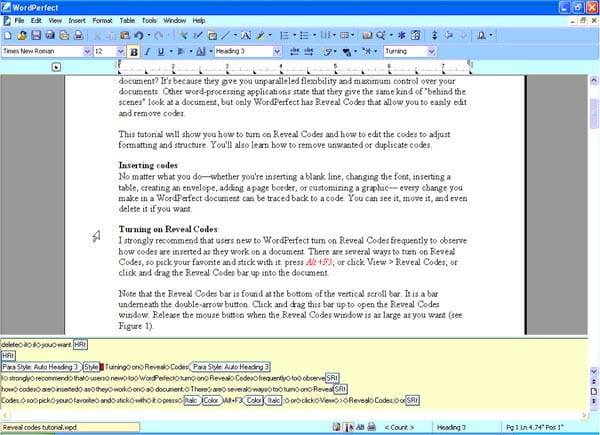Closer to html “view source”, or the “developer tools” you find in a web browser.
https://kb.corel.com/en/127364

Closer to html “view source”, or the “developer tools” you find in a web browser.
https://kb.corel.com/en/127364



“Prejudiced” is the word you are looking for.
It’s hidden by default but it should be there in C:\ProgramData\Microsoft\Windows\Start Menu\Programs\StartUp for “all users” and %APPDATA%\Microsoft\Windows\Start Menu\Programs\Startup separately for each user.
XP-7 had this right with a folder in the start menu for startup items, just drag a file or shortcut there and it runs on startup.
It’s the same in 10. This is actually one thing I find obnoxious in Linux, even as a user for 25+ years… menu “shortcuts” aka .desktop files are harder to make and poorly documented.
Also a testament to how much of a benefit it is when the vendors just get out of the way and don’t feel the need to add their own Special SauceTM to the drivers.


Heh, if you think Lenovo is bad and mac vs Lenovo is a bad choice to have to make…
…what do you put forth as the shining beacon of laptop mfgs? Cos it ain’t Dell, and it sure isn’t HP.
Who else is there?


That’s what most laptop OEMs do.
Dell is just “rebranded” Compal, Quanta, Clevo…
That’s not a bad thing and the ODM/OEM system is not anything new.
Sometimes the difference is just the badge, sometimes it’s firmware changes too, sometimes it’s completely customized to the OEM specifications.
It has varied a lot over time and mostly depends on how big the OEM is and proportionally how much time/effort/expense they want to throw at a particular design.


For screenshots I recommend Greenshot. Simple to use and good annotation tools.
I think you might have a different understanding of support than most. Nobody’s saying that the code to run this 30-year-old hardware should be enabled by default nor that distros should have them included by default.
That’s very different from whether the code is in the kernel in case someone wants to compile a custom kernel that does support it. Source code that’s disabled doesn’t add bloat to running systems.
/srv is for “site-specific data which is served by this system.”
How to interpret that is up to for debate, but it seems clearly to be “user files” as opposed to “system files”. “Served” is a bit ambiguous but I don’t think it really requires that it be made accessible with a network service.
Basically I’d treat this as a location to mount/store your non-personal data such as music, videos, etc that should be accessible to anyone using your system. It could be network-exported as well but doesn’t have to be.
/net is for files imported from the network.
There’s intel as well. Probably a few other small players. Is Matrox still around?


Why is the cc-by-nc-sa license disappointing? Is your disappointment exclusive to version 4.0?


What a confusing headline.


What’s with the scare quotes around “support”?


Is there any reason this 5% number still holds true? Back in the days of 40 MB hard drives it made sense to make sure the system didn’t totally run out while root was fixing the low disk situation … but these days even 1% is still several gigabytes of space, not likely to run out that quickly.


Yes… I’d classify context as a reboot of latex.


I’d say only open/libreoffice fits that.
Edit: maybe Tex/latex/lyx too, but context is not.


There are many instances like that. Systemd vs system V init, x vs Wayland, ed vs vim, Tex vs latex vs lyx vs context, OpenOffice vs libreoffice.
Usually someone identifies a problem or a new way of doing things… then a lot of people adapt and some people don’t. Sometimes the new improvement is worse, sometimes it inspires a revival of the old system for the better…
It’s almost never catastrophic for anyone involved.
Probably, yeah. Depends on a few other things (drive age, SMART test results, how risk-averse you are…)
But at least it’s worth thinking about.
~/Dokumentujo/git